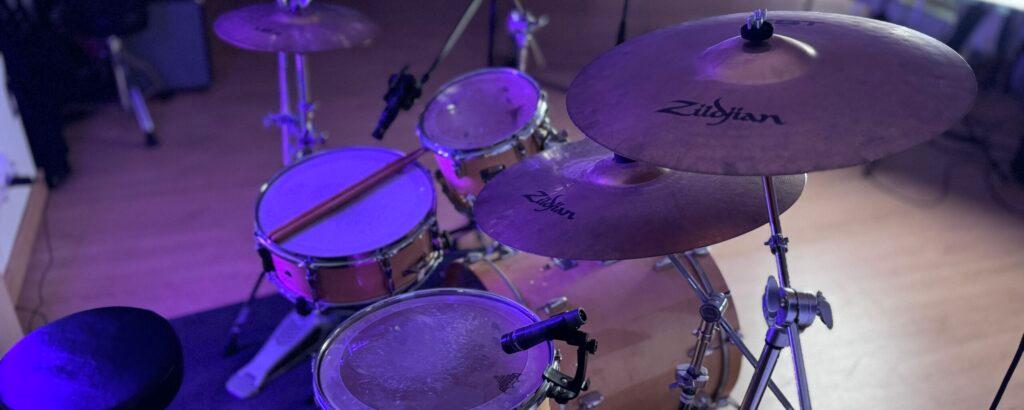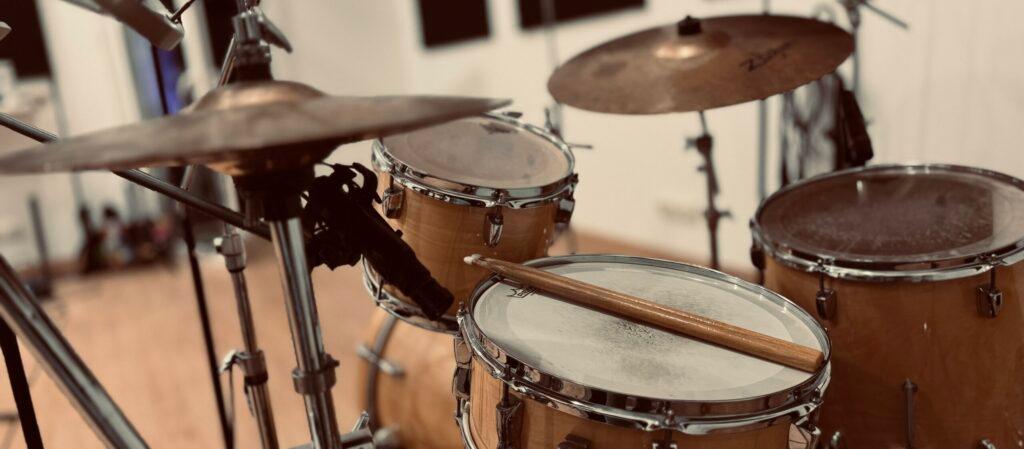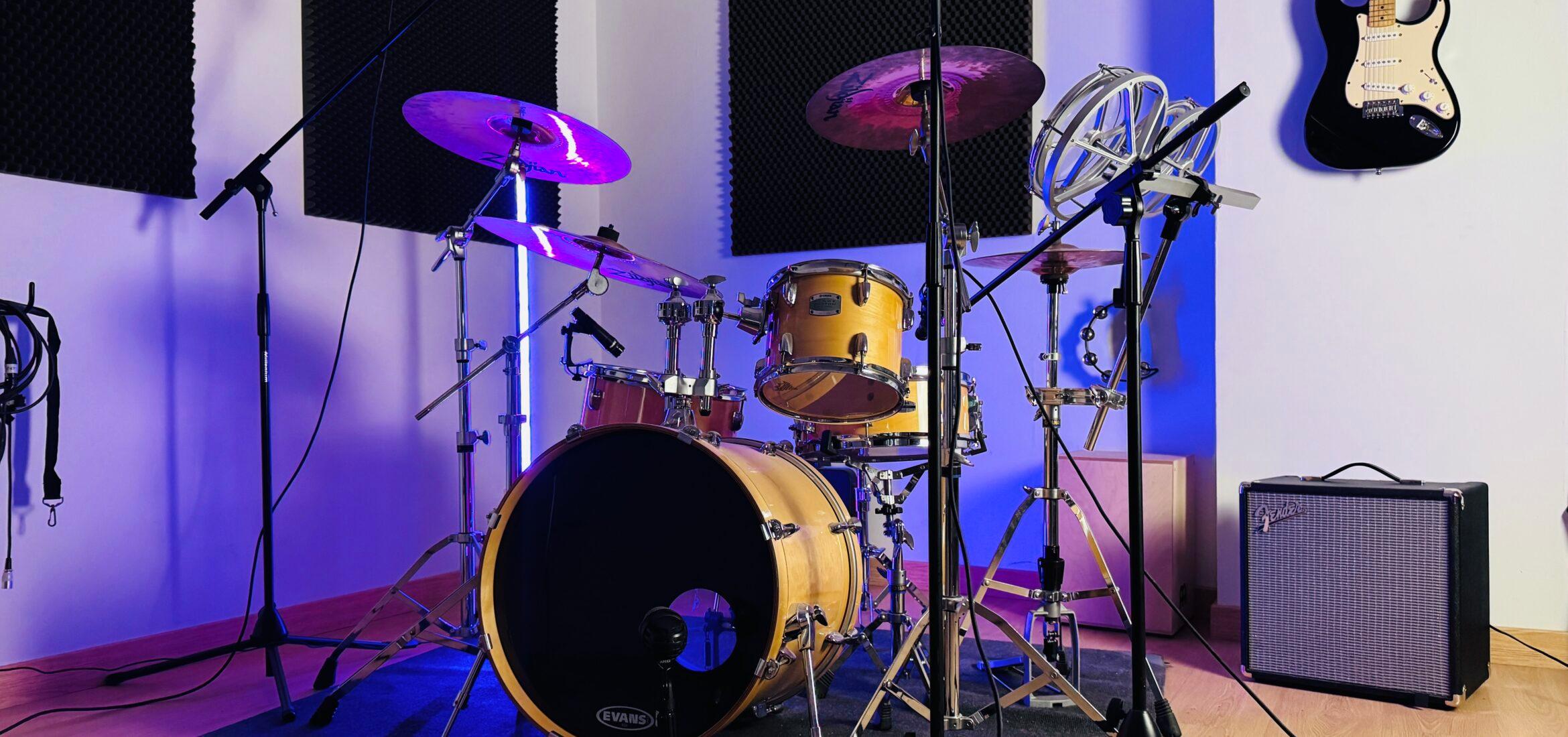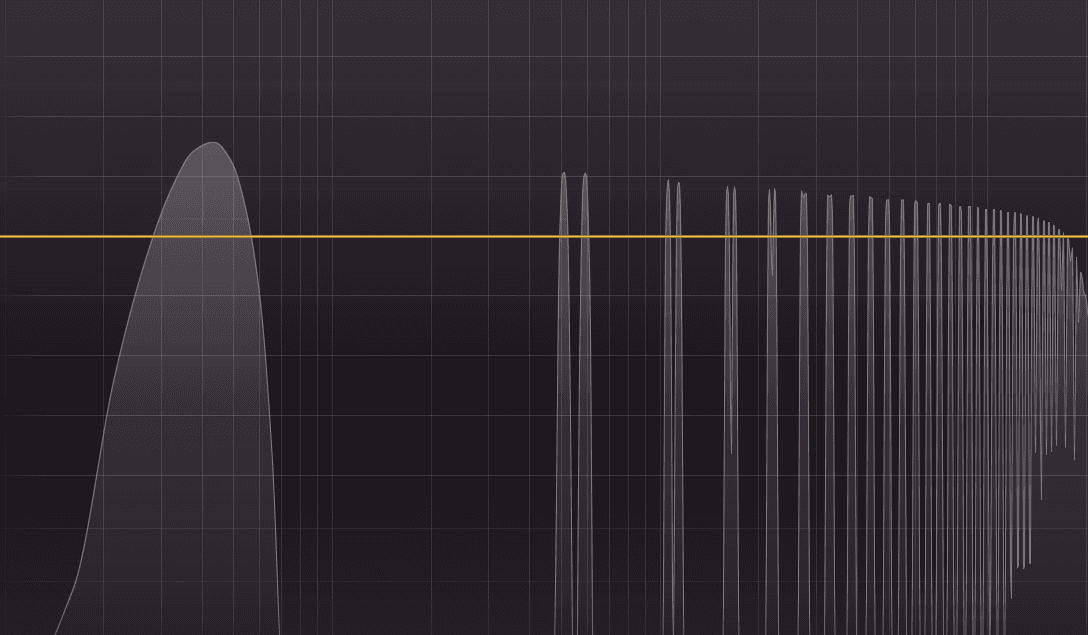Those unfamiliar with the recording process probably take drums for granted. While it’s true that drums don’t carry the melody or deliver lyrics, they do a lot more than just keep a beat. Recordings with lackluster drums don’t have the same impact as those with booming percussive sections. So, while you should focus on every sound in your mix, perhaps the most important of these is the drums. Here are three tips for recording drums to achieve the biggest sound possible.
1. Set The Room For Big-Sounding Drums
When recording drums, the first and perhaps most important step is getting the room right. After all, drums are loud. The vibrations from each part of the kit carry a long way, so it’s crucial to contain this sound while also letting it breathe. This way, you can harness the full, natural sound of the drums.
Not all drum rooms need to be the same size or shape, however. Depending on the genre you’re working with, one room might be better than another. For rock drums, high ceilings and closely parallel walls often result in a punchier, more aggressive tone. For orchestral drums, wide-open wooden rooms usually work well for the scope of sound you’re looking for. Panels for sound reflection and absorption can also be brought into any room to change the overall sound and character of the drums.
It will take some experimentation and experience to really grasp which type of room is best for the drum sound you desire.

2. Be Mindful Of Mic Placement
One of the challenges of recording live drums is knowing which microphone types are necessary and where to place the mics. You’ll need several. For starters, you’ll want at least two overhead condenser mics that will hover above the drum kit and capture the entire setup (especially the crash cymbals). Then you’ll need a mic that captures low-end frequencies for the kick drum, and something like a Shure SM57 mic for the snare drum (these mics are also good for toms). Small diaphragm condenser mics should be used for the other cymbals if you mic them individually.
Once you have your mics, you need to place them properly. If they’re too close to the drum, you’ll likely experience clipping; too far, and you’ll lose the punch you desire. Depending on how much or little room sound you want, adjust the angle of the overhead mics. If they’re angled toward the kit, you’ll get less room sound, and vice versa.
3. Focus On Frequencies When Recording Drums
After the room has been set, the mics have been placed to your liking, and the drums have been tracked, the rest falls on the EQ. Certain types of EQ are better than others in this case. If you’re looking to create big-sounding drums, try not to lose the low-mids of the drum mix. This is where much of the room sound lies. While too much room sound can reduce the impact of the drums, too little can result in excessive dryness.
When mixing the drums alongside the rest of the song, you’ll find that allowing some of the room to bleed through will enhance the overall “size” of the song and the drums. Even if the track sounds a bit loose on its own, listen to it in the context of the whole song before you remove too much low-mid range.

Conclusion
Achieving a full sound when recording drums is a blend of art and science. Beyond the technical aspects of room setup, mic placement, and EQ adjustments, it’s essential to trust your ears and instincts. Experimentation and creativity can lead to unique drum sounds that resonate within the context of your music. Embrace the process, and remember that the journey of recording is as important as the final product. By nurturing your sound and exploring different techniques, you’ll discover the perfect drum tone that elevates your tracks to new heights..
À propos de l'auteur

Ethan Keeley
Rédacteur, chanteur, musicien et monteur audioEthan Keeley est un musicien, un doubleur et un écrivain de Rochester, dans l'État de New York. Lorsqu'il n'est pas en tournée avec son groupe Unwill, il travaille sur de nouvelles chansons et histoires.
Laisse un commentaire
Connecte-toi pour commenter.


